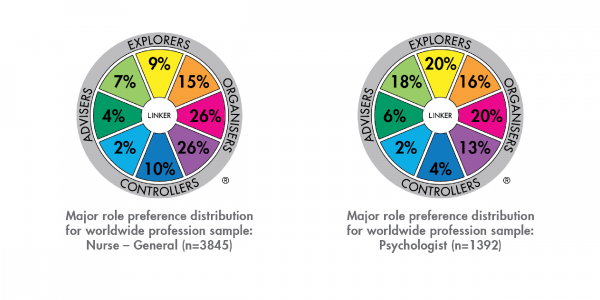The ‘new normal’ isn’t so new anymore but at TMS we have another kind of norm to get excited about. We have just released our new norm data which covers 152 professions, 65 industries and 50 countries, not to mention regions and genders. It’s been 35 years in the making and these latest reference groups capture data from over 600,000 respondents.
The big question is how do you use it?
It’s fascinating to read through the data but when you’re presenting to a team in a virtual room trying to help them understand their Team Management Profile (TMP), what value does it add?
The answer is heaps.
To demonstrate the value, we are going to share our favourite tips with you. But before we do… let’s answer another important question… why? Sharing TMS data is a great way of highlighting the robust and credible nature of the Team Management Profile. It reminds your clients and your learners that the psychometric profile they are receiving is well-supported by ongoing research. Assuring learners the credibility of the tools they are using in their professional development programmes should never be underestimated.
Confident learners are successful learners.
So, let’s get to our top 3 tips for using our new norm data in your development efforts. One thing to bear in mind when using any research data that stimulates comparisons is to manage conversations with your learners to ensure social comparisons don’t turn into a stereotyping contest. Also, remind your clients that you are looking at work preferences, not capabilities… and it’s certainly not a performance metric.
TIP #1 - Challenge cognitive bias
While we can’t eliminate bias at work, we can certainly raise self-awareness and develop curiosity around it. We all have explicit and implicit bias we carry around with us when we make decisions and interact with people at work. The good news is you can use our comprehensive norm data sets to spark a discussion around this.
Think about Auditors for a minute.
What type of person do you think of when you think of an Auditor? Now move your thoughts to the Team Management Wheel. What team role preference do you think Auditors gravitate towards the most?
If you’re thinking Controller-Inspectors…. think again!
According to our sample of Auditors, the majority have the major role preference of Concluder-Producer at 30% closely followed by Thruster-Organiser at 29%. Controller-Inspectors make up only 9% of Auditors.

Now imagine you’re working with a Sales team who collaborates closely with the Auditing department. This would be a valuable conversation to help shine a spotlight on any stereotypes that exist and encourage more questioning and curiosity around this.
TIP #2 - Stimulate a conversation around Diversity of Thought
Many of our clients know that Diversity of Thought is one result of successful diversity, equity and inclusion (DEI) efforts. When using the Team Management Profile, you can support these efforts by challenging status quo thinking that may exist in teams and leaders.
“Different roads sometimes lead to the same castle.”
The poetic words from George Martin in A Game of Thrones reminds us that we need to understand and embrace differences at work because they can lead us to our ultimate objective. This is where our latest normative data comes in. Consider the scenario where you have been contracted to run a team development program incorporating the TMP for a group of Project Managers. One activity within that program may involve comparing their team’s major role preference distribution against the normative data for this profession in Figure 256. Equip with these simple visuals you can lead a valuable discussion by asking questions such as:
Consider the scenario where you have been contracted to run a team development program incorporating the TMP for a group of Project Managers. One activity within that program may involve comparing their team’s major role preference distribution against the normative data for this profession in Figure 256. Equip with these simple visuals you can lead a valuable discussion by asking questions such as:
- What comparisons can you make?
- What similarities and differences do you notice?
- What does this mean for our diversity of thought?
- How can we further challenge our status-quo thinking?
TIP #3 - Work on the communication skill of Linking
True collaboration across teams and departments rests upon good communication. At TMS this is where Linking come into play. For all those accredited Practitioners out there, you know how critical the Linker role is.
It’s the glue that binds the work preferences together.
You can use our new normative data to design activities to help develop expert Linkers. Say for example you were developing a program for a team of Nurses in a hospital who needed to improve the way they link with a team of Psychologists. You can start off by presenting both normative data sets side by side. You can use the following questions to help the group move from observing the data to interacting with the data to using the data to drive their motivation to work on Linking skills.

Want to know more?
Find the latest TMS Norm Data HERE or contact our Learning & Development team on learn@tmsoz.com